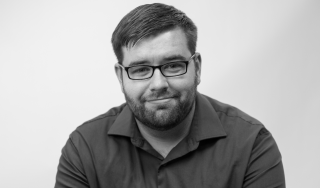
3 reasons for the declining number of Latino physicians
The number of Latino physicians in the U.S. dropped 22 percent between 1980 and 2010.
The U.S. Hispanic population has seen significant growth in past 50 years, so how is it that fewer Latinos are becoming physicians?
Earlier this year, Latino Leaders Magazine reported on this decline: a 2015 study, conducted by the Center for the Study of Latino Health and Culture at UCLA, indicates that the number of Latino physicians dropped 22 percent over a 30-year period.
1980: 135 Latino physicians per 100,000 Latinos
2010: 105 Latino physicians per 100,000 Latinos
While there a various possible reasons for this decline, the publication offered several explanations.
Despite an increase in grants designed to enhance the efforts of schools to recruit more Latino students into medical disciplines, Elena Rios, President of the National Hispanic Medical Association, said the cost for medical school remains too high.
Rios suggested that universities should find ways to help middle class families afford higher education. With student loans, a potential Latino physician from a middle class family could deal with as much as $300,000 in debt after completing both an undergraduate program and medical school, compounded by interest rates as high as 30 percent.
RELATED CONTENT
According to Rios, young Latinos are often encouraged by their parents to begin working after graduating high school to help financially support their families. This direction can pressure students to give up on their educational pursuits, despite the promise of a higher income after they ultimately complete their schooling.
“It is not an academic problem,” Rios told Latino Leaders. “It’s a personal problem. That is why we need the doctors that are Latino that have gone through the same issue to help the younger students cope with it. There’s nobody else who truly understands what they’re going through.”
For Lamees Galal, the decline in Latino physicians is rooted in systemic racism. Galal is the coordinator for multicultural affairs at SUNY Upstate Medical University. She also serves as the assistant director for the school's Collegiate Science Technology Entry Program (CSTEP), which is designed to support students who are disadvantaged and underrepresented.
Galal said it is the responsibility of individual educational institutions to ensure that there is diversity among the students that enter the healthcare professions. One way CSTEP works toward this ideal is through the “Try On a White Coat” program, which gives students in their first or second year of college an opportunity to come to SUNY to experience firsthand what being a healthcare professional is like. The university also runs a program in which medical school students visit local high schools students to encourage students to get interested in the healthcare professions before starting college.
“We need to expose students to these healthcare careers,” Galal told Latino Leaders. “We need support, attention and mentorship. Mentorship is so key. We need to see people that look like us are doing this and are successful in this.”











LEAVE A COMMENT: